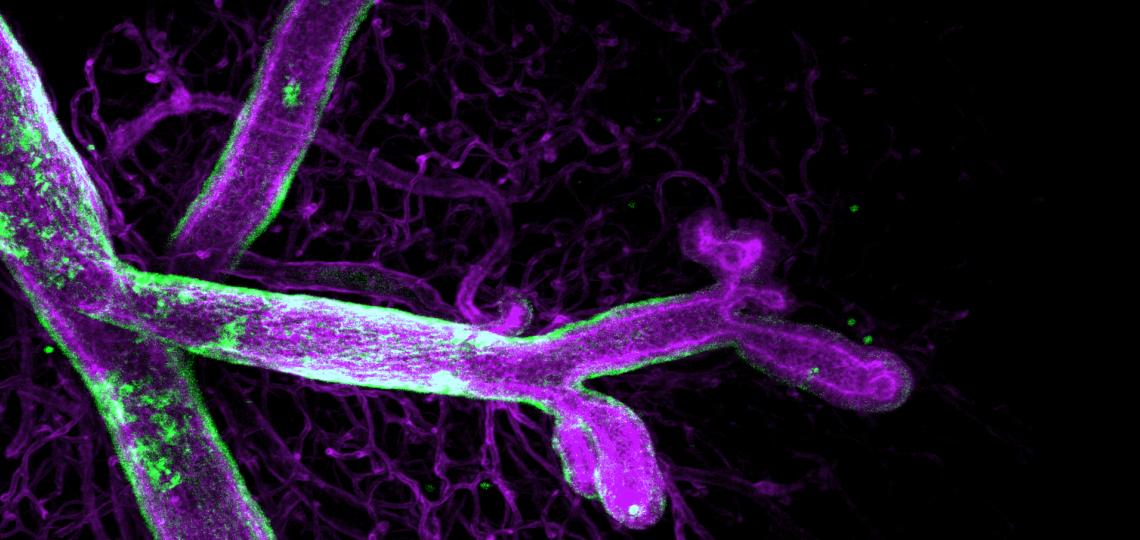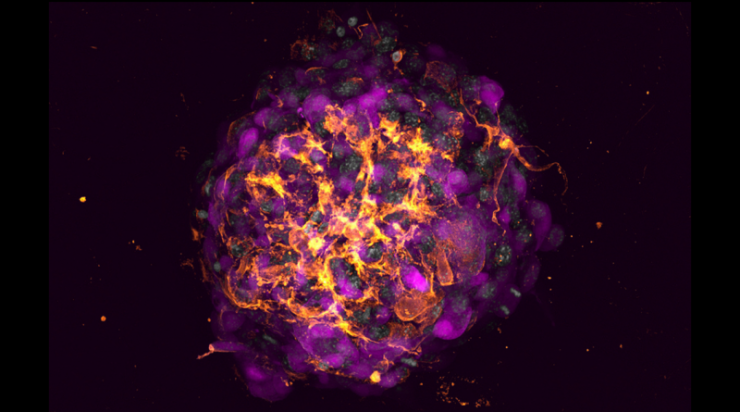
Unraveling Cellular Communication in Breast Cancer
About the Lab
The research scope of The Roarty Lab spans the spectrum of normal breast homeostasis to cancer metastasis. Breast development is constantly reshaped by a combination of hormonal, genetic, and environmental factors. In breast cancer, this landscape is even more complex. The lab’s mission is to understand the molecular underpinnings of breast cancer progression and metastasis, with the intent to develop new approaches for therapeutic intervention. What determines the propensity for metastatic spread in patients? How does the cellular topography within a tumor shape metastatic fitness for tumor cells? How do these cellular landscapes evolve in unfamiliar niches encountered in metastasis? To pursue these questions, we use in vitro 3D organoid platforms, in vivo syngeneic animal models, and patient-derived specimens, together with an arsenal of cutting-edge technologies.
Image of the Month: November 2022

Human breast cancer organoid in a collagen-based 3D matrix
The cancer cells (magenta) lack the noncanonical Wnt receptor, Ror2. The protein fibronectin (orange) is up-regulated and assembled by Ror2-deficient tumor cells, triggering the invasion, dissemination and survival of cancer cells during metastatic transit. Nuclei are depicted in gray. The image was captured on the lab's Zeiss LSM 880 with Airyscan FAST Confocal Microscope.
Each month the Baylor College of Medicine blog, From the Labs, features an image from our labs and cores. For the month of November 2022, the Roarty Lab's image was published in the blog.
Lab Resources
Cancer Research Resources
- American Association for Cancer Research
- NIH - National Cancer Institute
- American Cancer Society - Breast Cancer
- Susan G. Komen
Clinical Trial Information
Lab Members
View a listing of the Roarty Lab members along with links to their bios.
Publications
Our research projects and studies result in peer-reviewed publications in scientific journals.








